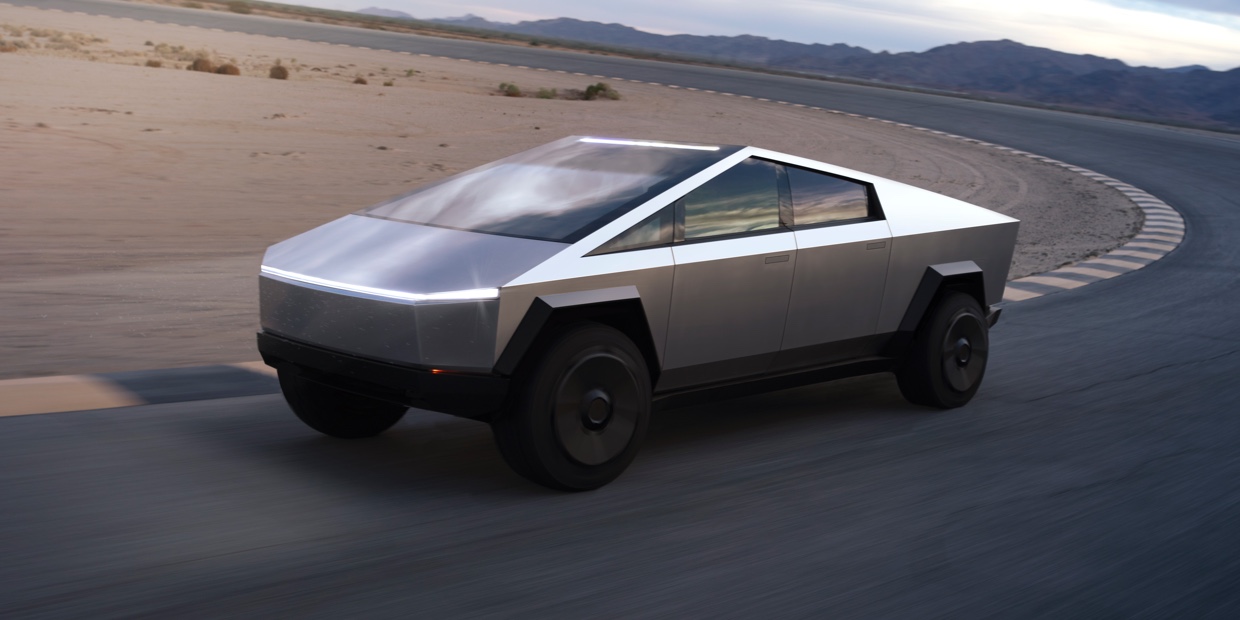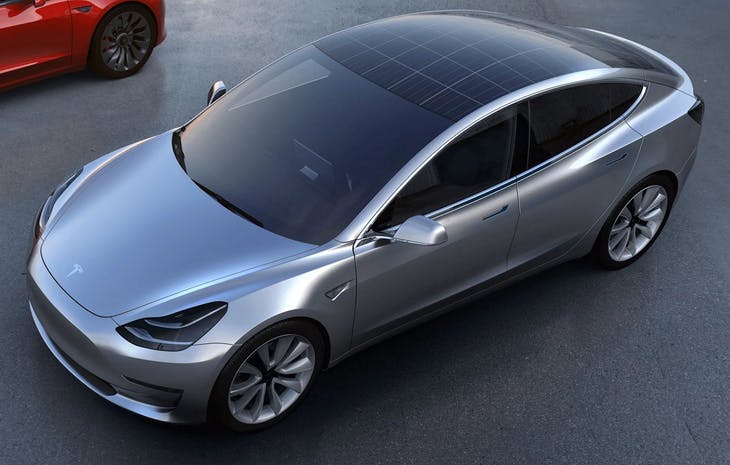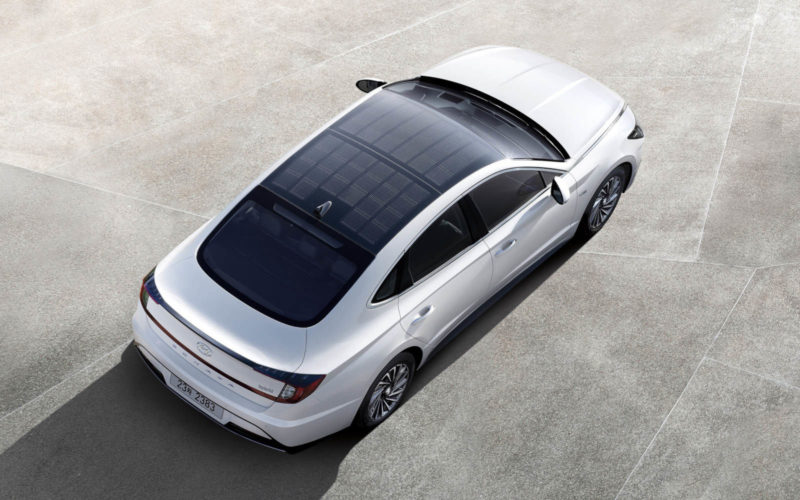
When Tesla CyberTruck begins to be officially delivered in the second half of 2021, it should become the world’s first mass-produced solar pickup truck, because it can be equipped with car roof solar panels to bask in the sun and provide 15 miles of range per day.
Tesla may be the most suitable car company in the world to launch solar cars, because in addition to the automotive business, Tesla also has an energy storage business that includes solar panels. As early as 2017, Musk urged Tesla’s engineers to consider integrating solar panels on the Model 3.
The CyberTruck, known as the Mars model, will be the first Tesla solar battery car model. Its large-area car roof design is very conducive to the installation of solar panels. This will also complement an important part of Musk’s pursuit of new energy territory-solar panel roof + energy storage battery + electric vehicle + solar vehicle.
Human attempts to produce solar cars did not start with Tesla. Traditional car companies such as Toyota and Hyundai, as well as startups such as Sono Motors and Lightyear, have all launched similar products, but Tesla is expected to be the first Its large-scale mass production and commercial application of car companies because Tesla has SolarCity.

Solar Panels on the Road to Success
A car can run in the sun without refueling or charging. This is an idea of mankind’s use of solar energy.
As early as 2010, Toyota Prius, the world’s best-selling hybrid vehicle, had an optional solar panel. Subsequently, this optional feature was canceled until it became part of the Toyota Prius prime model again in 2017.
In 2010, the Toyota Prius’ solar panels only supplied power to the vehicle’s 12V lead-acid battery. Directly supplying power to the battery pack of the hybrid system would cause wireless interference to the car’s audio system. Therefore, it could not provide much help for the vehicle’s battery life. The 2017 Prius Prime solar panels can power the hybrid system battery pack.
The 2017 Toyota Prius Prime is equipped with an 8.8kWh battery pack that can provide 22 miles of battery life on a single charge. When the battery pack is charged by solar panels, it can provide 2.2 miles of battery life per day under ideal conditions.
The 2020 Sonata Hybrid launched in South Korea in 2019 is also equipped with a car roof solar charging system. This is the first-generation system on modern mass-produced models. It can only charge 30-60% of the 1.76kWh battery pack in 6 hours. Of electricity. Currently, the second and third generation solar charging systems are being developed.
Start-up company Sona Motors is preparing to produce solar cell car Sion EV, its roof solar system can provide 21 miles of battery life; while another start-up company Lightyear said its solar system installed on its first model Lightyear One, charging The speed is 12km per hour, which is a shocking data, we will wait and see. Because Sion EV plans to start mass production in the second half of 2020, and Lightyear One plans to start delivery in early 2021.
As for Tesla CyberTruck, which will be delivered in the second half of 2021, it currently holds more than 500,000 orders and plans to provide an optional solar charging system at the time of delivery. It is expected to provide 15 miles of battery life per day. There is currently no price for an optional solar charging system. Previously, the optional solar system for the 2010 Toyota Prius was priced at $2,000. I believe that the price of Tesla’s optional solar battery system should be lower, because Tesla has the strongest solar panel technology in the world’s car companies.

Solar Panels from Roof to Car Roof
In November 2016, Tesla acquired Solar City, another company under Musk’s name. SolarCity is a leader company in the residential solar market in the United States. Musk hopes to build a power ecosystem: electric cars-household batteries, solar panels, smart home appliances and mini/microgrid power management software.
Tesla and SolarCity can produce huge chemical reactions. In 2017, Musk began to urge Tesla’s engineers to install solar panels on the Model 3. Four years after its release, Model 3 has become the world’s highest-selling pure electric vehicle model.
Model 3 has not become Tesla’s first model equipped with solar panels, the latest mass production model CyberTruck will be equipped. Tesla’s solar panels will extend from the roofs of households to Tesla’s mass-produced models. With the expansion of scale, Tesla’s solar panel technology will develop and its cost will inevitably decrease. , Which means higher charging efficiency and lower unit power cost.
In the future, perhaps all of Tesla’s mass-produced models will use the solar cell system as a standard feature, because at this time, the cost of Tesla’s solar system can be fully borne by the user. Its solar panels, perhaps It will cover the car roof, hood, etc.
We can imagine that in the future, a typical American Tesla user will install Tesla SolarCity’s solar cell roof for his own house, equipped with its home battery Powerwall, and drive Tesla’s pure electric car, and it will be equipped with solar energy system. A pure electric vehicle with a battery system can not only be charged with the family’s electricity ecosystem every day, but also can be supplemented with solar panels.
From a larger perspective, Tesla’s home power ecosystem is a micro system that will complement the national grid system. At present, Tesla has promoted this system in the United States and is also recruiting solar-related employees in China, and hopes to promote similar systems in China.
The scale of human use of solar energy will rapidly expand with the development of these solar roofs, solar street lights, night lights, solar cars, and larger-scale solar photovoltaic power stations. The future of clean energy is worth looking forward to.



 2021-01-09
2021-01-09

















